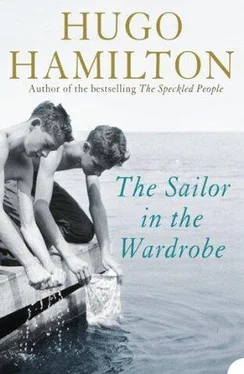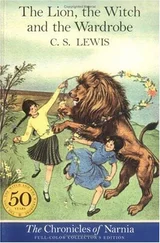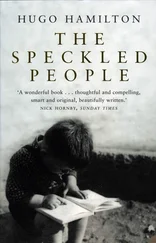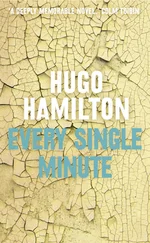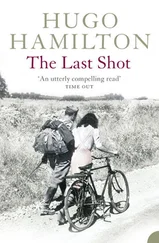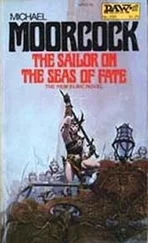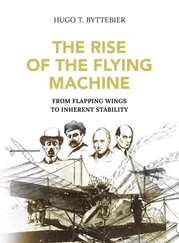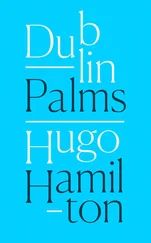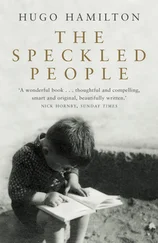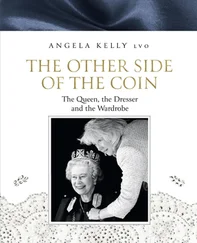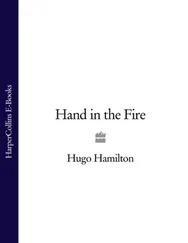I had the power of the real knowledge on my side. I carried the secret with me that could have shattered Packer’s character in front of the whole school. I could have spoken up and declared him a fake. I could have said he was an impostor, a mountebank, a false hero living on the courage of his people. I could have reduced him to a tumbled statue from a forgotten empire, like Nelson. I could have told Brother K and all the schoolboys to follow me out onto the street, all the way into the Municipal Art Gallery next door, and pointed to the painting of the Dutch woman. There is your instrument of torture. But I didn’t want that glory for myself. Instead, it became part of my secret life, part of the underground life that I lived in hiding. It was Packer who remained the hero, and even though he still refused to talk to me, it was a consolation to know that he needed me to keep this secret, even though he didn’t know it. He was carrying the glory and I was invisible.
There was a lecture given by a great art historian in the gallery one day and we got the afternoon off to attend. He explained the origins of the Dutch movement of portrait painting. He called it the golden age of Dutch genre painting. He explained how they had an obsession with painting women writing letters or reading books. Everybody thought it was very boring altogether and there was only a snigger at one point when the art historian mentioned a famous painting called Woman at Her Toilet . He didn’t have much to say about the Dutch woman with the gilded frame, except that it was interesting that there was so little furniture in the background. I was staring at the painting and everybody must have been wondering why I was so interested, as if I saw some hidden meaning in this Dutch portrait that no art expert had yet noticed.
I kept going back into the gallery on my own. I stood in front of the painting and thought about the instrument of torture hidden on top of the frame. I wished I could have told people and created a story of liberation around myself. I kept reminding myself of things that my mother told me and could never tell the world either, secrets that she kept in her diary, because that was her only real friend in life.
There was another painting I came across in the gallery, even more interesting than the Dutch woman. It was the beheading of John the Baptist. I knew it had something in common with my own story and the way I was unable to move on in time. John the Baptist was kneeling down at the centre of the painting with his eyes closed, his neck exposed, hands behind his back. To the right behind him, a soldier, dressed in flowing clothes, swinging the sword. It made me understand the power of an artist, the secrets they carry in their heads and the way they can slow a moment in life to a standstill. I could not stop thinking about the agonizing, endlessly revolving movement in this painting. The soldier’s arms were full of strength and tension. You could see his muscles tight with action and the sword only two seconds away from slicing through the neck of John the Baptist. You could foresee the next moment clearly when his head would fall to the ground and roll away, while his decapitated body surged with a fountain of blood through the severed neck. You could stand there in front of the painting, waiting, hoping it would not happen, thinking somebody could say something and it could still be stopped at the last minute. You could stand there knowing exactly what was coming next, but the sword would never reach that point.
I looked at this picture like a big film on screen. I stood in front of it and thought of Sophie Scholl when she was sent under the guillotine in Munich. I thought of the trains going to Auschwitz. I thought of bombs stopped in mid-air over cities. I thought of guns pointing at heads. People waiting with hoods over their heads in police stations up North. That quiet moment in the street before a car bomb goes off, before the timing device changes everything beyond recognition. I thought of the Enola Gay in mid-air, like a stationary Air-Fix model in the sky over Japan. I was stuck in that revolving moment of history, paralysed and unable to move forward in time, unable to live in the aftermath and still wishing I could hold everything up like an artist. I was forever stuck in this pre-calamity, this pre-beheading, this pre-gas chamber moment when everything was fine, but already too late.
Then one day I heard that Packer was injured in a motorbike accident. He had broken his leg and was in hospital. Some of my class went to visit him and said he was having a great time with all the nurses laughing at his jokes. I started thinking of going to visit him myself, but I was afraid that he would not talk to me. It was my mother who encouraged me to go and see him. She knew that I had become invisible and told me to walk into the hospital and not care.
So that’s how I walked into the ward and Packer seemed shocked at first when he saw me. He didn’t know what to say. We shook hands and he smiled at me. Instead of talking about what happened between us, he started telling stories. He sat up in bed with his leg in plaster, with lots of signatures and little drawings on it, most of them made by girls. There was chocolate and fizzy drinks and flowers everywhere. He said he had been given morphine and it felt like he was rolling around in his bed like a marble, down onto the floor, into the steel bedside locker beside him with the door closing behind him. He never said a word about the fact that he had cut me off. We never spoke about that and just became friends again as before.
All that is over now and I have begun to pretend that nothing ever happened. Since then Packer has been trying to make up for the silence, including me in everything he does, getting me the job at the harbour. But something has changed, as if I can never fully trust friendship again after that. I can never tell him anything about myself and I have decided to remain in hiding. And maybe that’s what friendship is, this uneasy pact between two different people, between the person who carries the glory and the person who carries the secret. It’s as if he needs me now as much as I need him. It’s the pact of heroes and followers, of pop stars and fans, of idols and admirers. It’s the pact between the artist and the person he paints, the pact between the storyteller and the person who lives inside the story.
So now that’s all in the past. It’s Packer and me working together at the harbour, sitting in a boat, drifting away and looking up at the clouds, listening to the sound of hammering somewhere in the distance. We see Tyrone coming out of the harbour, bringing a group of models out to the island along with a photographer. We follow them at a distance and see them setting up on the island with Tyrone sitting in the background drinking a small bottle of whiskey. We watch them for a long time being photographed in their swimwear, changing behind a canvas screen and coming out in new costumes. One of them has to hold a basket full of mackerel. One of them wears a bathrobe, leaning back on the rocks, almost falling off the edge into the water and showing her legs. Another one in a leopard-skin swimsuit and a straw hat, chasing after the goats. Another picture of two girls together in miniskirts and high boots feeding seagulls.
When Tyrone arrives back in the harbour with the models, I can hear Dan Turley muttering and cursing because he’s jealous that Tyrone got the job of bringing the models out to the island. Tyrone is younger and more handsome, and looks like the kind of man who hangs around models all the time, laughing and offering them cigarettes. Tyrone helping the models with their bags. Tyrone holding a model’s hand and assisting her out of the boat, as if she’s stepping out of her dress. Tyrone getting his picture taken with a big smile on his face and his arms around all the girls.
Читать дальше
Конец ознакомительного отрывка
Купить книгу
